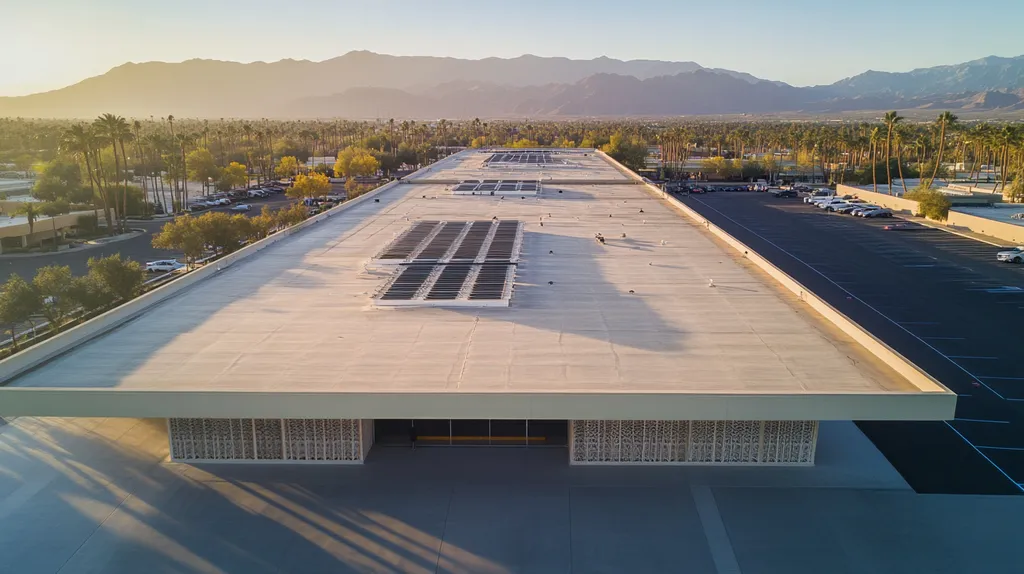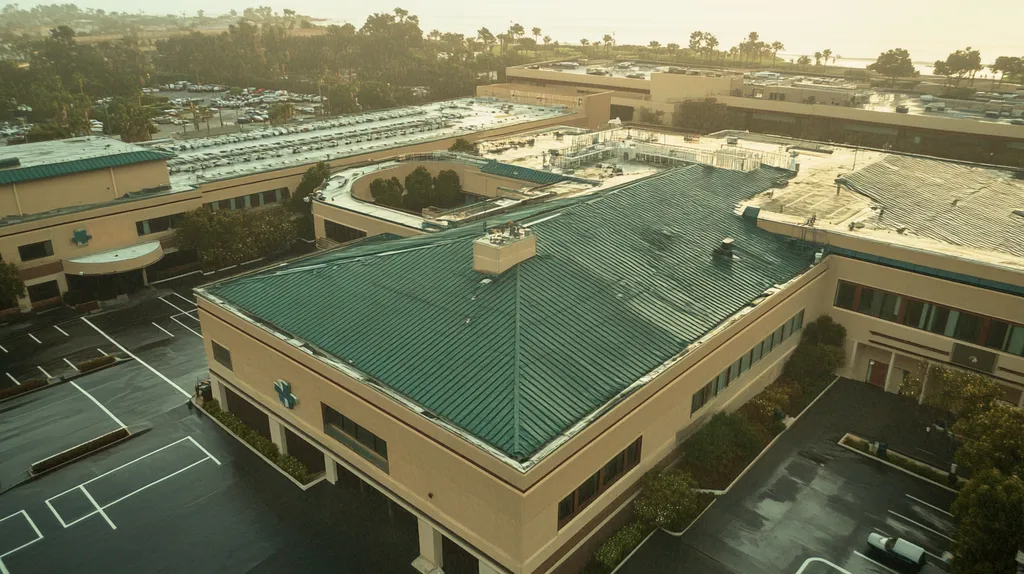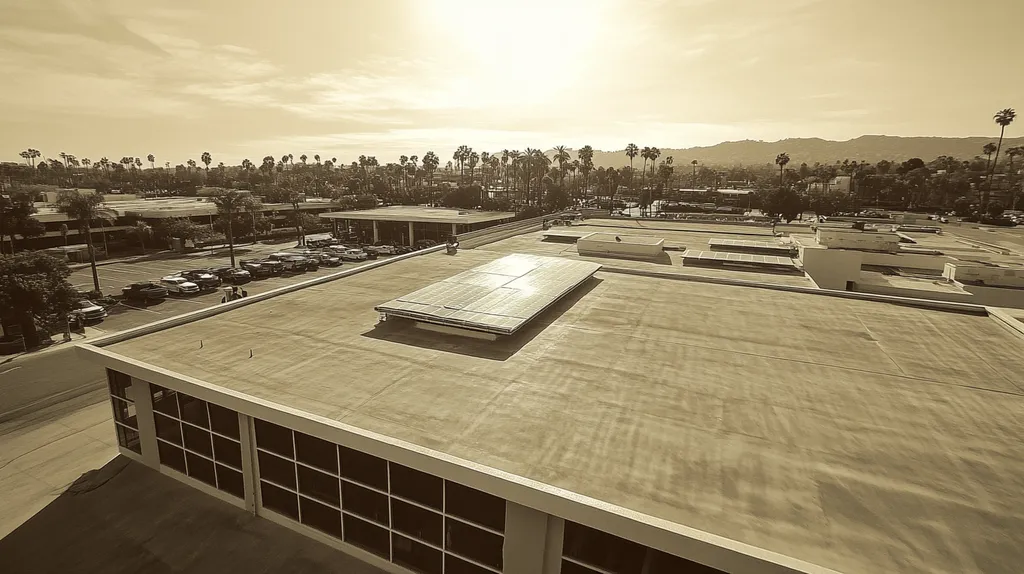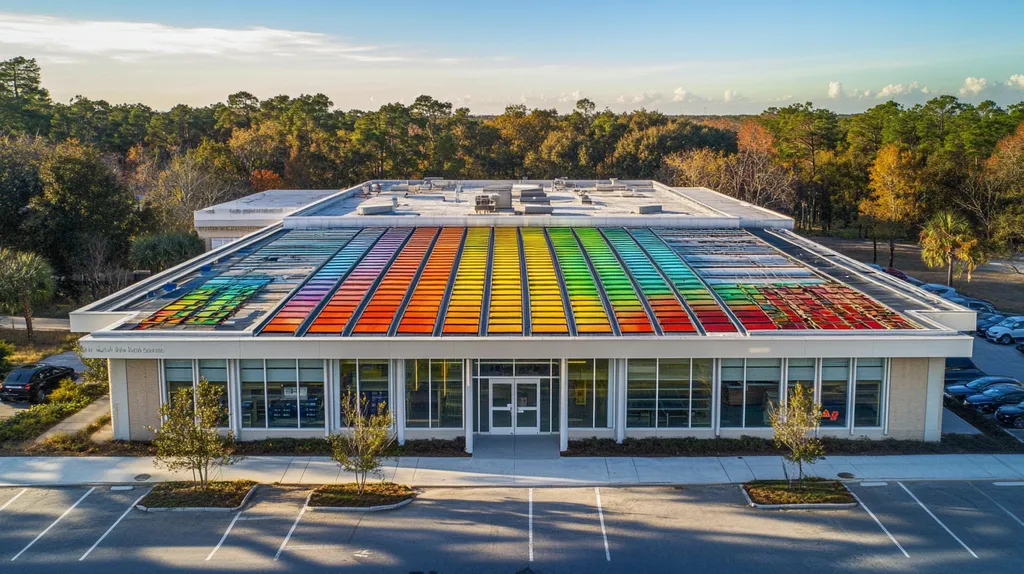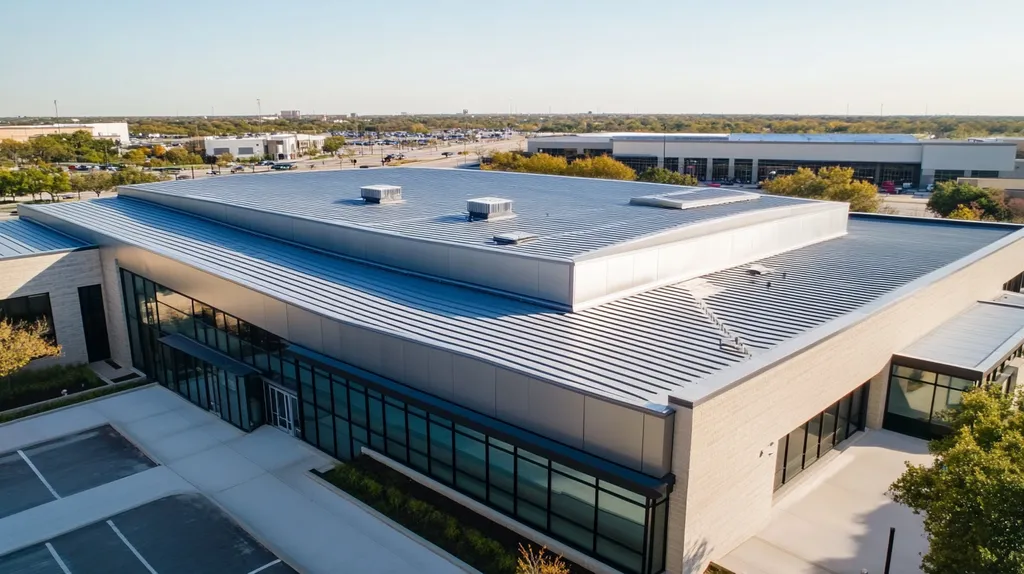Welcome to today’s Battle Royale featuring two roofing heavyweights: “Liquid-applied Membrane” in the east corner versus “Reinforced Bitumen” in the west!
Tonight’s showdown pits these contenders against each other across six punishing rounds designed to test every aspect of their performance for historical commercial roofs.
At stake? Millions in potential costs, decades of building protection, and the critical performance demands of modern commercial and industrial facilities.
Our professional judging panel will evaluate each round on technical merit, real-world performance, and value delivery. After all six rounds, we’ll declare our ultimate champion.
Ladies and gentlemen, facility managers and building owners… it’s time to rumble!
ROUND 1: INITIAL COSTS & INSTALLATION
Selecting the wrong coating system for a historical commercial roof can lead to premature failure, structural damage, and costly repairs. The initial investment and installation process significantly impact both short-term budgets and long-term performance. Property owners must carefully weigh material costs, installation requirements, and project duration to protect their historical assets.
Material Expenses
Liquid-applied membranes represent a significant upfront investment, with costs typically ranging 30-40% higher than traditional systems. Their advanced formulations provide superior flexibility and adhesion, particularly valuable for historical structures with complex roof geometries.
The first elastomeric coatings, introduced in the 1970s, demonstrated remarkable durability and protective properties, establishing a track record of performance that continues today. These systems can provide 10-20 years of service life when properly installed. (source: American WeatherStar)
Reinforced bitumen systems offer more competitive initial pricing, typically costing 25-35% less than liquid-applied alternatives. This cost advantage makes them particularly attractive for projects with tight budgets.
Based on material costs alone, reinforced bitumen earns the “ADVANTAGE” in this category.
Installation Complexity
Liquid-applied membrane installation demands precise environmental conditions and extensive surface preparation. Temperature, humidity, and substrate moisture all critically affect application success.
These systems require specialized equipment and highly trained technicians to achieve proper mil thickness and coverage. Multiple coats must be applied with specific cure times between layers.
Reinforced bitumen installation follows more standardized procedures with fewer environmental restrictions. The sheet application process requires less specialized training and offers more forgiving installation parameters.
Given the simpler installation requirements, reinforced bitumen claims another clear “ADVANTAGE.”
Project Timeline
Liquid-applied membrane projects typically extend 30-50% longer than conventional installations. This extended timeline accounts for surface preparation, multiple coating applications, and cure times between layers.
Weather delays can significantly impact liquid application schedules, as proper conditions must be maintained throughout the installation process. Each interruption extends the overall project duration.
Reinforced bitumen installations proceed more predictably, with fewer weather-related delays. The systematic sheet application allows for more accurate project scheduling and faster completion.
The faster, more predictable installation timeline gives reinforced bitumen the “ADVANTAGE” in this category.
ROUND 1 WINNER: REINFORCED BITUMEN
ROUND 2: DURABILITY & LIFESPAN
Historical commercial roofs face unique preservation challenges that can lead to catastrophic failures when inappropriate coating systems are selected. Weather exposure, maintenance demands, and material degradation threaten these irreplaceable structures daily. Understanding how different coating options perform over extended periods is crucial for protecting architectural heritage and controlling long-term costs.
Weather Resistance
The evolution of commercial roofing coatings traces back to innovations in the 1960s and early 1970s, when manufacturers discovered that combining asphalt with bentonite clay created exceptionally weather-resistant surfaces. This breakthrough continues to influence modern coating formulations. (source: AskARoofer)
Liquid-applied membranes create a seamless, monolithic barrier that excels at preventing water infiltration and resisting UV degradation. Their elastomeric properties allow them to expand and contract with temperature fluctuations while maintaining watertight integrity.
Reinforced bitumen systems rely on overlapped sheets and seams that can become vulnerable to water penetration over time. While modern bitumen formulations offer good weather resistance, their segmented nature creates potential failure points.
For superior weather protection, liquid-applied membranes earn the “ADVANTAGE” in this category.
Maintenance Requirements
Regular maintenance directly impacts coating longevity and performance. Liquid-applied membranes typically require only periodic inspections and occasional touch-ups to maintain their protective properties.
These systems resist deterioration from standing water and generally maintain their flexibility throughout their service life. Their seamless nature eliminates the need for routine seam maintenance.
Reinforced bitumen systems demand more frequent maintenance attention, particularly at seams, flashings, and terminations. These areas require regular inspection and often need repairs to prevent water infiltration.
Given their lower maintenance demands, liquid-applied membranes claim the “ADVANTAGE” here.
Longevity
Expected service life significantly influences return on investment for historical roof coatings. Properly installed liquid-applied membranes consistently achieve 15-20 year lifespans, with some systems performing effectively for 25+ years.
These systems maintain their protective properties and flexibility throughout their service life, particularly in challenging environmental conditions. Their monolithic nature reduces common failure points.
Reinforced bitumen systems typically provide 10-15 years of service, though environmental factors and maintenance quality can significantly impact longevity. Seam degradation often determines the end of their effective service life.
The extended service life potential gives liquid-applied membranes the “ADVANTAGE” in longevity.
ROUND 2 WINNER: Liquid-applied Membrane
ROUND 3: PERFORMANCE FACTORS
Performance failures in historical commercial roofing systems can lead to catastrophic damage, compromising irreplaceable architectural features and causing extensive structural deterioration. The selection of appropriate coating materials directly impacts a building’s resilience against environmental stressors and its long-term preservation potential.
Property owners must evaluate how different coating options perform across critical metrics including thermal stress, UV exposure, and chemical resistance to ensure adequate protection of their historical assets.
Durability and Lifespan
Liquid-applied membranes create a seamless, monolithic barrier that provides superior protection against environmental stressors. Their advanced polymer formulations maintain flexibility throughout extreme temperature cycles, preventing cracking and delamination common in aging structures.
These systems excel in conforming to irregular surfaces and maintaining watertight integrity around complex architectural details. Their ability to self-terminate at edges and penetrations significantly reduces potential failure points.
Reinforced bitumen systems rely on mechanical fastening and overlapped seams that can become stress points over time. While offering good initial durability, these systems may experience progressive deterioration at joints and transitions.
The seamless application and superior flexibility give liquid-applied membranes the ADVANTAGE in durability.
Weather Resistance
Acrylic-based liquid membranes provide exceptional reflectivity and UV resistance, particularly beneficial in high-heat, low-humidity environments. Their specialized formulations create highly effective weather barriers that protect underlying historical materials. (source: Gaco)
These coatings maintain their protective properties even under intense solar exposure and temperature fluctuations. Their elastic nature allows them to accommodate building movement without compromising the moisture barrier.
Reinforced bitumen provides reliable weather protection but can experience accelerated aging from UV exposure. The sheet system’s seams and terminations require careful detailing to prevent water infiltration during severe weather events.
For superior weather protection capabilities, liquid-applied membranes earn the ADVANTAGE.
Maintenance Requirements
Liquid-applied systems typically require minimal ongoing maintenance due to their seamless nature. Regular inspections can identify potential issues before they develop into significant problems.
The ability to easily repair damaged areas through spot application of additional coating material reduces long-term maintenance costs. These systems can often be renewed through recoating without complete removal.
Reinforced bitumen systems demand more frequent inspection and maintenance, particularly at seams and flashings. Sheet separations and edge lifting require prompt attention to prevent water infiltration and system failure.
The reduced maintenance burden gives liquid-applied membranes the ADVANTAGE in this category.
ROUND 3 WINNER: Liquid-applied Membrane
ROUND 4: MAINTENANCE REQUIREMENTS
Maintenance failures in historical commercial roofing systems can trigger catastrophic deterioration, with repair costs often exceeding $50,000 per incident. The complexity of historical structures demands precise maintenance protocols to preserve architectural integrity and prevent water infiltration. Understanding the distinct maintenance requirements of different coating systems directly impacts both preservation outcomes and long-term operational costs.
Regular Inspection Requirements
Liquid-applied membrane systems require annual professional inspections to maintain warranty coverage and optimal performance. These inspections focus on identifying potential adhesion issues, checking coating thickness, and examining high-stress areas around penetrations.
The seamless nature of these systems allows for straightforward visual assessments, with most issues being detectable before they compromise the membrane’s integrity. Small repairs can typically be completed during inspection visits, preventing minor issues from escalating.
Reinforced bitumen systems demand quarterly inspections to monitor seam integrity and detect potential water infiltration points. These inspections must carefully evaluate overlaps, flashings, and termination points where system failures commonly begin.
With less frequent inspection requirements and simpler assessment protocols, liquid-applied membranes earn the “ADVANTAGE” in this category.
Repair Procedures
Through decades of commercial roofing evolution, coating systems have advanced significantly in their repairability. Modern acrylic-based liquid membranes demonstrate exceptional compatibility with repair materials, allowing seamless integration of patches and touch-ups. (source: Gaco)
Liquid-applied membrane repairs typically involve minimal surface preparation and can be completed with standard application equipment. The repair material bonds directly with the existing membrane, maintaining system integrity.
Reinforced bitumen repairs require more extensive preparation, including removal of damaged sections and careful matching of existing materials. These repairs often create additional seams that can become future vulnerability points.
The simpler, more effective repair process gives liquid-applied membranes the “ADVANTAGE” here.
Long-term Care Requirements
Liquid-applied membranes maintain their protective properties with minimal intervention beyond regular cleaning and periodic recoating. Their resistance to UV degradation and environmental stressors reduces the need for intensive maintenance.
These systems can often be refreshed through the application of additional coating layers, extending their service life without complete replacement. This capability significantly reduces lifetime maintenance costs.
Reinforced bitumen systems require ongoing attention to seam integrity and more frequent material replacement. Their multi-layer construction necessitates more complex maintenance procedures and higher long-term costs.
The reduced long-term care requirements give liquid-applied membranes another clear “ADVANTAGE.”
ROUND 4 WINNER: Liquid-applied Membrane
ROUND 5: SUSTAINABILITY CREDENTIALS
Improper roofing material selection threatens both environmental sustainability and historical preservation efforts, with construction waste accounting for over 40% of landfill content in many urban areas. Commercial property owners face mounting pressure to adopt eco-friendly solutions while protecting irreplaceable architectural assets. Understanding the environmental impact, energy efficiency, and lifecycle implications of different coating systems has become crucial for responsible facility management.
Environmental Impact
In the evolution of roofing materials, significant advancements have transformed traditional tar and asphalt applications into more environmentally conscious solutions. Modern liquid-applied membranes utilize advanced polymer technologies that produce minimal volatile organic compounds during installation. (source: Gaco)
These systems create seamless barriers that require fewer raw materials and generate minimal waste during installation. Their extended service life reduces the frequency of replacement and subsequent material disposal.
Reinforced bitumen systems typically generate more installation waste through sheet cutting and overlap requirements. Their production process involves energy-intensive manufacturing and creates significant carbon emissions.
For superior environmental performance, liquid-applied membranes claim the “ADVANTAGE” in this category.
Energy Efficiency
Thermal performance significantly impacts both operating costs and environmental footprint. Liquid-applied membranes provide superior reflective properties and can be formulated with specific thermal resistance characteristics.
These systems maintain their reflective properties throughout their service life, reducing cooling loads and energy consumption. Their seamless nature eliminates thermal bridges common in other systems.
Reinforced bitumen typically absorbs more solar radiation, increasing building heat gain and cooling requirements. While modern formulations offer improved thermal properties, they cannot match the performance of specialized liquid coatings.
The superior thermal efficiency gives liquid-applied membranes the “ADVANTAGE” here.
Lifecycle Assessment
Material longevity and disposal impact define long-term environmental sustainability. Liquid-applied membranes can often be renewed through recoating rather than complete replacement, significantly reducing waste generation.
These systems allow for eventual removal without contaminating other roofing components. Their chemical composition enables more environmentally responsible disposal options.
Reinforced bitumen systems frequently require complete removal and replacement, generating substantial waste. Their composite nature complicates recycling efforts and often results in landfill disposal.
The reduced lifecycle impact gives liquid-applied membranes another clear “ADVANTAGE.”
ROUND 5 WINNER: Liquid-applied Membrane
ROUND 6: SPECIALIZED APPLICATIONS
Historical commercial roofs present unique coating challenges that can result in catastrophic failures when specialized application requirements are overlooked. With restoration costs frequently exceeding $250,000 per project, selecting appropriate coating systems becomes critical for preserving architectural heritage. The complexity of historical structures, combined with modern performance demands, requires careful evaluation of specialized coating capabilities.
Complex Geometry Solutions
Historical commercial structures often feature intricate architectural details, dormers, and complex roof geometries that challenge traditional coating applications. These design elements create numerous potential failure points that must be properly protected.
Liquid-applied membranes conform seamlessly to irregular shapes and complex transitions, creating a continuous protective barrier. Their fluid application allows complete coverage of ornate architectural features without compromising historical aesthetics.
Reinforced bitumen systems struggle with complex geometries, requiring extensive cutting, fitting, and seaming. Built-up roofing techniques, while traditional, often fail to adequately protect intricate historical details. (source: American WeatherStar)
The superior conformability gives liquid-applied membranes the “ADVANTAGE” in this category.
Heritage Material Compatibility
Historical roofing materials require coating systems that prevent chemical interactions while allowing natural thermal movement. Incompatible coatings can accelerate deterioration of irreplaceable architectural elements.
Liquid-applied membranes offer excellent chemical compatibility with most historical substrates. Their elastomeric properties accommodate thermal expansion without transferring stress to underlying materials.
Reinforced bitumen systems may react adversely with certain historical materials and can restrict natural building movement. Their rigid nature sometimes leads to separation or delamination from heritage substrates.
The superior material compatibility gives liquid-applied membranes the “ADVANTAGE” here.
Restoration Flexibility
Preservation projects often require coating systems that can be modified or partially replaced without compromising the entire installation. This flexibility becomes crucial when addressing localized deterioration or adapting to changing preservation requirements.
Liquid-applied membranes allow for sectional repairs and modifications without disturbing adjacent areas. Their chemistry permits seamless integration of new material with existing coatings.
Reinforced bitumen systems typically require extensive removal and replacement when modifications are needed. Their layered construction makes isolated repairs more difficult and often less effective.
The superior restoration flexibility gives liquid-applied membranes the “ADVANTAGE.”
ROUND 6 WINNER: Liquid-applied Membrane
AND THE WINNER IS…
After six grueling rounds of technical evaluation, we have our verdict…
Ladies and gentlemen, with a commanding victory of FIVE rounds to ONE, your new heavyweight champion is… LIQUID-APPLIED MEMBRANE!
This technical powerhouse dominated the competition with superior performance in durability, weather resistance, maintenance efficiency, sustainability, and specialized applications. Its seamless application and exceptional flexibility proved unbeatable for protecting historical commercial structures.
But don’t count Reinforced Bitumen out completely! This veteran contender still packs a punch in the initial cost and installation arena, making it a solid choice for projects with tight budgets and straightforward geometries.
Remember, folks – every building brings its own unique challenges to the ring. Local climate conditions, substrate materials, and specific architectural features all influence coating performance. While tonight’s match provides valuable insights, it can’t account for every variable in your corner.
Before making your final decision, always consult with qualified roofing professionals who can evaluate your specific situation and recommend the best contender for your property.
In the high-stakes arena of historical commercial roofing, victory doesn’t just come from picking the champion – it comes from matching your building’s unique requirements with the right coating’s strengths. Now get out there and make your roof great again!
FREQUENTLY ASKED QUESTIONS
Q. What are initial costs for a commercial roof coating?
A. Initial costs depend on the selected coating system and installation complexity. Liquid-applied membranes often have a significant upfront investment, typically 30-40% higher than traditional reinforced bitumen systems. This higher cost reflects their advanced formulations that provide essential flexibility and adhesion for historical roofs.
Q. Which commercial roof coating lasts longer?
A. Liquid-applied membranes generally last longer than reinforced bitumen, with lifespans of 15-25 years. Properly maintained, they maintain durability even in challenging environments. In contrast, reinforced bitumen usually lasts around 10-15 years, with longevity dependent on environmental conditions and maintenance diligence.
Q. How do maintenance requirements differ for industrial roofs?
A. Maintenance frequency varies significantly between coating types. Liquid-applied membranes require annual professional inspections, focusing on adhesion and high-stress areas. In contrast, reinforced bitumen systems need quarterly inspections, with more attention to seams and flashings to prevent leaks.
Q. Which coating offers better weather resistance for commercial roofs?
A. Liquid-applied membranes outperform reinforced bitumen in weather resistance. They create a seamless barrier that effectively prevents water infiltration and UV damage, while their elastomeric properties allow for expansion and contraction. Reinforced bitumen, with overlapped seams, is more susceptible to leaks over time.
Q. How do environmental factors affect commercial roof coatings?
A. Environmental factors such as temperature, humidity, and UV exposure significantly affect coating performance. Liquid-applied membranes are designed to handle these variations, maintaining integrity without cracking. Reinforced bitumen, however, may degrade more rapidly under extreme conditions due to seam vulnerability and material rigidity.
Q. Can liquid membranes be adapted for specialized commercial roof applications?
A. Yes, liquid-applied membranes excel in specialized applications. Their ability to conform to complex geometries allows comprehensive coverage of intricate architectural details, facilitating effective protection. Reinforced bitumen, however, can struggle with these complexities, making it less adaptable for delicate historical structures.
Q. What are the sustainability advantages of different roof coatings?
A. Liquid-applied membranes are more sustainable due to lower waste production, minimal VOC emissions, and the potential for coatings renewal. Their design allows for easier disposal compared to reinforced bitumen systems, which generate more waste and complicate recycling efforts due to their layered construction.

